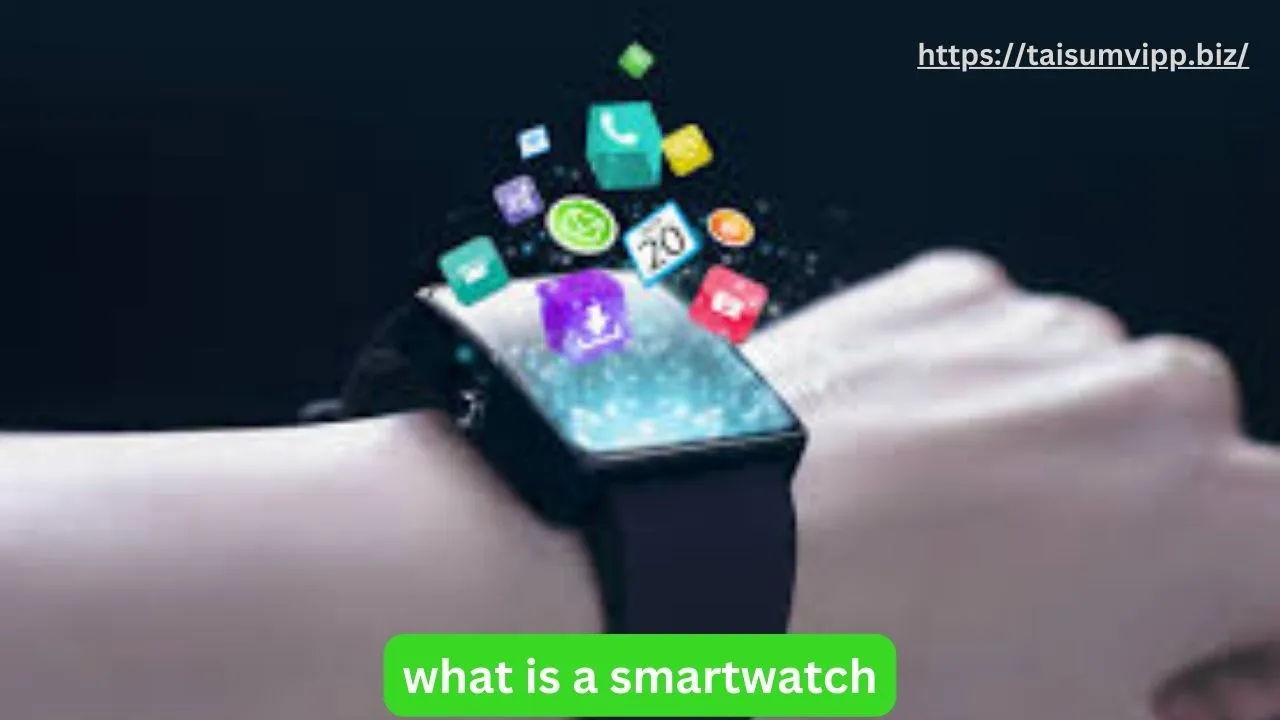A smartwatch is more than just a traditional timepiece. It is a powerful device worn on the wrist, equipped with advanced technology that allows it to function as an extension of your smartphone. This comprehensive guide will delve into the various aspects of smartwatches, helping you to understand their growing importance in our daily lives.
Understanding the Basics of a Smartwatch
Definition and Functionality of a Smartwatch
A smartwatch is defined as a wearable computer in the form of a wristwatch. It not only shows the time but also offers various functionalities similar to those found on smartphones. This includes features such as notifications for calls, messages, and emails, as well as the ability to run applications, track health metrics, and even control smart home devices. With the integration of voice assistants like Siri or Google Assistant, users can also interact with their smartwatches using simple voice commands, making it easier to manage tasks hands-free.
The functionality of a smartwatch hinges on its connectivity. Most smartwatches rely on Bluetooth technology to pair with a smartphone, allowing users to receive alerts and messages directly on their wrist. Many models also incorporate features such as GPS tracking, heart rate monitoring, and various sensors that offer insights into health and fitness, making them versatile tools for daily life. Some advanced smartwatches even feature ECG monitoring and blood oxygen level tracking, providing users with critical health data that can be shared with healthcare providers for better health management.
Evolution of Smartwatches
The concept of smartwatches is not new; it dates back to the 1970s with early digital watches. However, the modern smartwatch, as we know it, began gaining traction in the early 2010s. The launch of the Pebble Smartwatch in 2013 marked a significant turning point, inspiring major tech companies to enter the market. This initial wave of smartwatches focused on basic notifications and fitness tracking, but as technology advanced, so did the capabilities of these devices.
Since then, manufacturers such as Apple, Samsung, and Fitbit have created their own smartwatch models, each bringing innovative features to meet the diverse needs of consumers. These advancements have included improved sensor accuracy, longer battery life, and a broader selection of applications, all contributing to the smartwatches we have today.
Moreover, the introduction of customizable watch faces and interchangeable bands has allowed users to personalize their devices, making them not just functional gadgets but also stylish accessories that can complement any outfit. As the market continues to evolve, we can expect even more integration with emerging technologies such as augmented reality and artificial intelligence, further enhancing the smartwatch experience.
Key Features of a Smartwatch
Health and Fitness Tracking
One of the standout features of smartwatches is their ability to track health and fitness metrics. Most devices come equipped with heart rate monitors, pedometers, and sleep tracking capabilities. Users can set fitness goals, log workouts, and even analyze their daily activity in real-time.
Moreover, many smartwatches support advanced health tracking features, such as ECG monitoring and blood oxygen levels. This functionality not only supports maintaining a healthy lifestyle but also provides valuable data that can be shared with healthcare professionals when needed.
Additionally, some models offer guided breathing exercises and stress management tools, helping users cultivate mindfulness and improve overall mental well-being. With the integration of apps that promote healthy habits, users can receive personalized recommendations based on their activity levels and health metrics, making it easier to stay motivated and on track with their fitness journeys.
Communication and Connectivity
Smartwatches boost communication by allowing users to receive calls and texts without needing to pull out their smartphones. Notifications appear on the watch’s screen, and some models allow users to answer calls or reply to messages via voice commands or pre-set responses.
In addition to voice and text communication, many smartwatches come with social media notifications, calendar reminders, and app alerts. This connectivity helps users stay organized and informed, making it easier to manage their daily responsibilities.
Furthermore, with features like GPS navigation and contactless payment options, smartwatches enhance convenience, allowing users to navigate new places or make quick purchases without the hassle of carrying a wallet or phone. The seamless integration of these functionalities ensures that users can stay connected and engaged, even in the busiest of lifestyles.
Entertainment and Multimedia
The entertainment options available on smartwatches have seen significant development over the years. Users can now control music playback, stream podcasts, and even watch videos directly from their watch, provided they are connected to Wi-Fi or paired with their smartphone.
Some smartwatches allow users to download apps for streaming services and social media, transforming the wrist device into a versatile multimedia hub. This enhances the user experience, enabling them to stay entertained while on the go. Additionally, many smartwatches feature customizable watch faces and widgets, allowing users to personalize their device to reflect their style and preferences.
With built-in speakers and microphones, users can enjoy hands-free listening and voice commands, making it easier to engage with their favorite content while multitasking. The evolution of smartwatches as entertainment devices has truly redefined how users interact with media, making it more accessible than ever before.
Operating Systems in Smartwatches
Android Wear OS
Android Wear OS is a popular operating system developed by Google specifically for wearable devices. It integrates seamlessly with Android smartphones, offering users a familiar interface for managing notifications, accessing apps, and controlling smart home features.

The customization options available on Wear OS allow users to choose from a vast selection of watch faces and apps tailored to fitness, productivity, and entertainment, enhancing its appeal to a broad audience. Moreover, the operating system supports voice commands through Google Assistant, enabling users to set reminders, check the weather, or control music playback with simple voice prompts.
This hands-free functionality is particularly useful for those on the go, making it easier to stay connected without needing to pull out a smartphone.
Apple Watch OS
The Apple Watch OS is designed for Apple’s smartwatch line and is known for its intuitive user experience and robust integration with the Apple ecosystem. Users can effortlessly switch between apps, monitor health metrics, and use features like Apple Pay.
In addition, the Apple Watch has gained a reputation for its focus on health and fitness tracking, solidifying its status as a leading competitor in the smartwatch market. The watchOS supports third-party apps, allowing developers to create unique experiences for Apple users.
Features such as heart rate monitoring, ECG capabilities, and even blood oxygen level tracking have made the Apple Watch a critical tool for health-conscious individuals. Furthermore, the introduction of the Fitness+ subscription service has enhanced the watch’s functionality, providing users with guided workouts and personalized fitness plans right from their wrist.
Other Notable Operating Systems
Besides Android Wear OS and Apple Watch OS, other operating systems play a vital role in the smartwatch market. Tizen OS, developed by Samsung, powers many of their wearables, providing customization and smooth integration with Samsung devices.
Similarly, Garmin’s proprietary operating system focuses on fitness and outdoor activities, appealing to athletes and adventurers. These operating systems highlight the diversity of features across different brands, catering to various user needs and preferences. For instance, Garmin’s watches often come equipped with advanced GPS capabilities, making them ideal for runners and cyclists who require precise tracking of their routes and performance metrics.
Additionally, Fitbit’s OS, which has evolved since its acquisition by Google, emphasizes health and wellness, integrating features like sleep tracking and stress management tools, thus broadening the appeal of smartwatches to users who prioritize holistic health monitoring.
How to Choose the Right Smartwatch
Compatibility with Your Smartphone
When choosing a smartwatch, it is crucial to consider compatibility with your smartphone. Most smartwatches are designed to work best with their corresponding operating systems. For instance, Android smartwatches work optimally with Android smartphones, while Apple Watches are tailored for iPhones.

It is advisable to verify compatibility before making a purchase, as some features may not function fully if the smartwatch is paired with an incompatible phone.
Battery Life Considerations
Battery life is a vital factor in selecting a smartwatch. Many modern smartwatches offer extended battery life ranging from one to several days, depending on usage patterns and features enabled. It is essential to consider how frequently you will use features like GPS or heart rate monitoring, which can drain battery faster.
Some devices come with battery-saving modes, allowing users to extend the life of their smartwatch during critical times, enhancing the overall usability.
Design and Personal Style
The design of a smartwatch can greatly influence buyer decisions. Smartwatches come in various styles, sizes, and materials, allowing users to choose a watch that suits their personal aesthetic and lifestyle needs. Whether you prefer a sporty, casual, or classic design, there is a smartwatch out there for you.
Additionally, many smartwatches offer interchangeable bands, enabling users to customize their look based on occasions, outfits, or personal taste. Consideration of design, comfort, and versatility is essential for a satisfying purchase.
In conclusion
the adoption of smartwatches is increasing, as they offer a blend of functionality, connectivity, and style. Understanding their features and specifications is paramount in selecting the right device for your needs. As technology continues to advance, smartwatches will inevitably adapt, bringing even more innovative solutions to the forefront.




